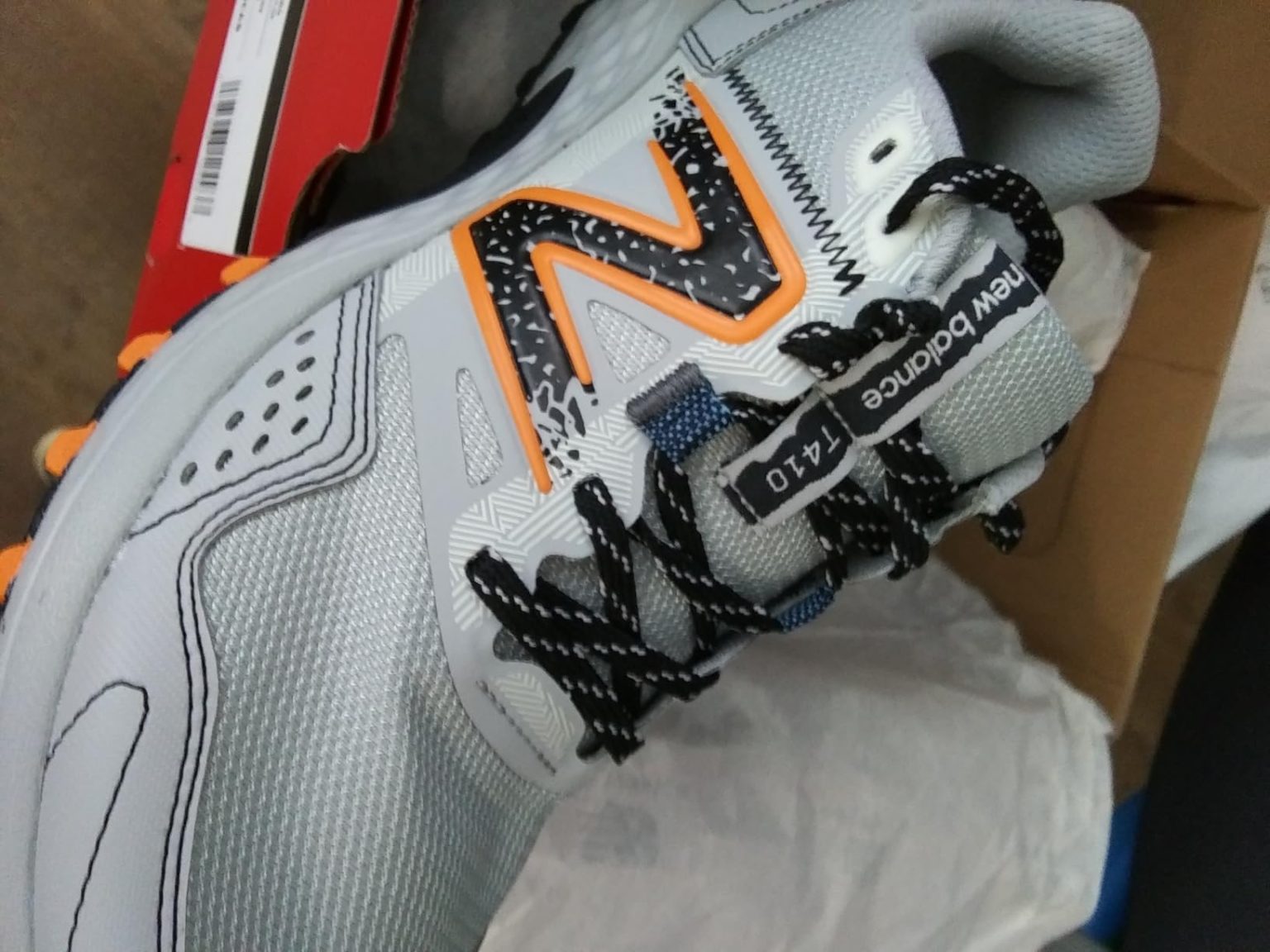Last Tuesday at the local running shop, my buddy mentioned he’d been crushing trails in some New Balance MT410V8s for months. Mike here, and as someone who’s been through more trail shoes than I care to count, I was dealing with the pressure of finding affordable shoes that could actually handle my weekend warrior routine. That’s why I spent 8 weeks putting these through every test I could imagine. Here’s the unfiltered truth about whether these budget trail runners can deliver.
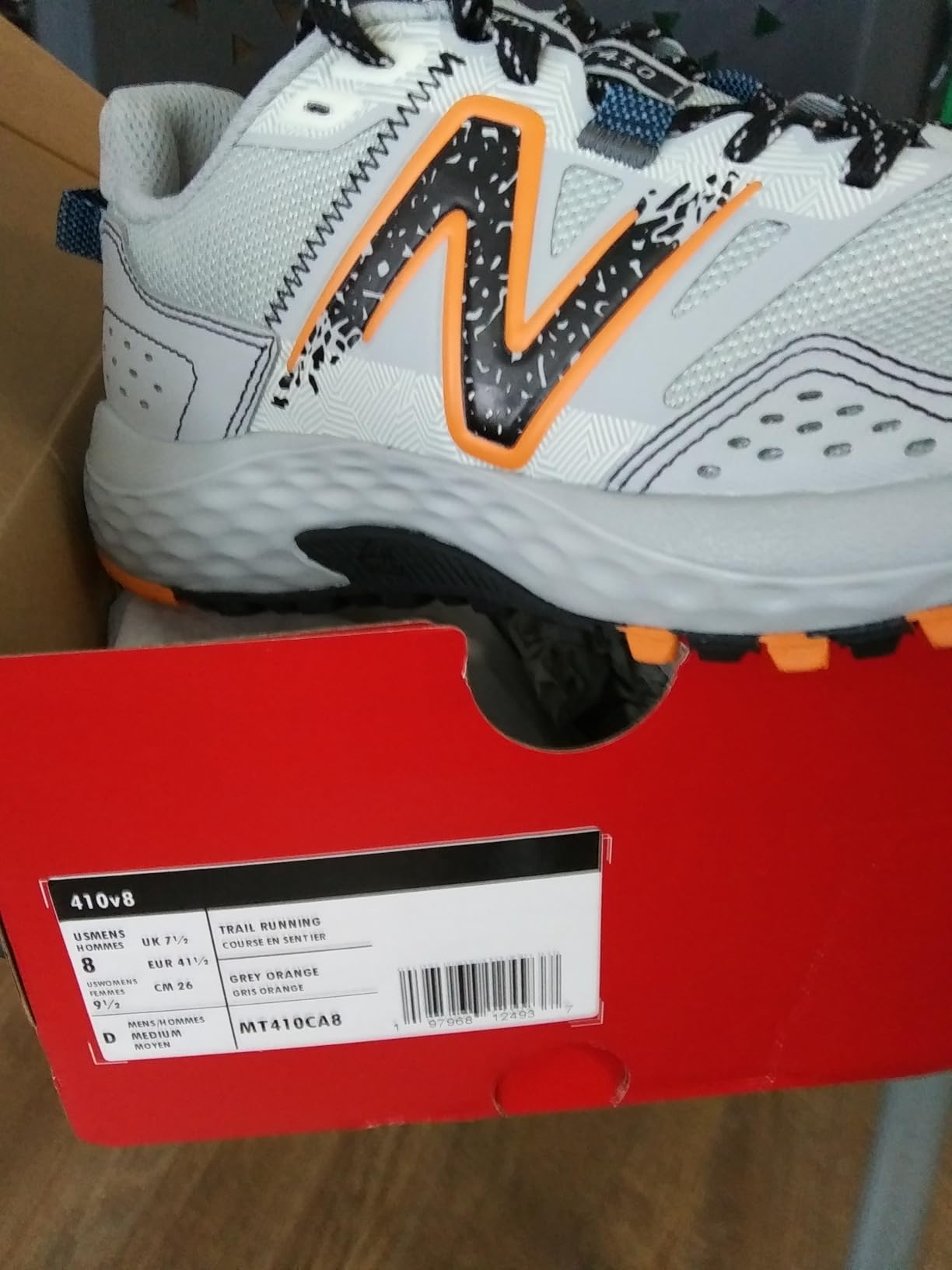
Technical Specifications
- 💰 Price: $60-80 ()
- ⚖️ Weight: 10.2 oz (men’s size 9)
- 📏 Heel-to-toe drop: 10mm
- 📐 Stack height: 20mm heel / 10mm forefoot
- 🧪 Midsole material: BIO Foam
- 👟 Upper material: Synthetic mesh with overlays
- 🏃♂️ Category: Trail Running / All-terrain
- 🎯 Best for: Light trail running, hiking, casual outdoor activities
- ⏱️ Testing period: 8 weeks, 45 trail miles, 12 hiking sessions
Design, Build Quality & Real-World Performance
Right out of the box, the MT410V8 feels like exactly what you’d expect from a budget New Balance trail shoe. The synthetic upper has a sturdy feel – not premium, but definitely built to take some abuse. The mesh panels provide decent ventilation, though don’t expect the breathability of higher-end models.
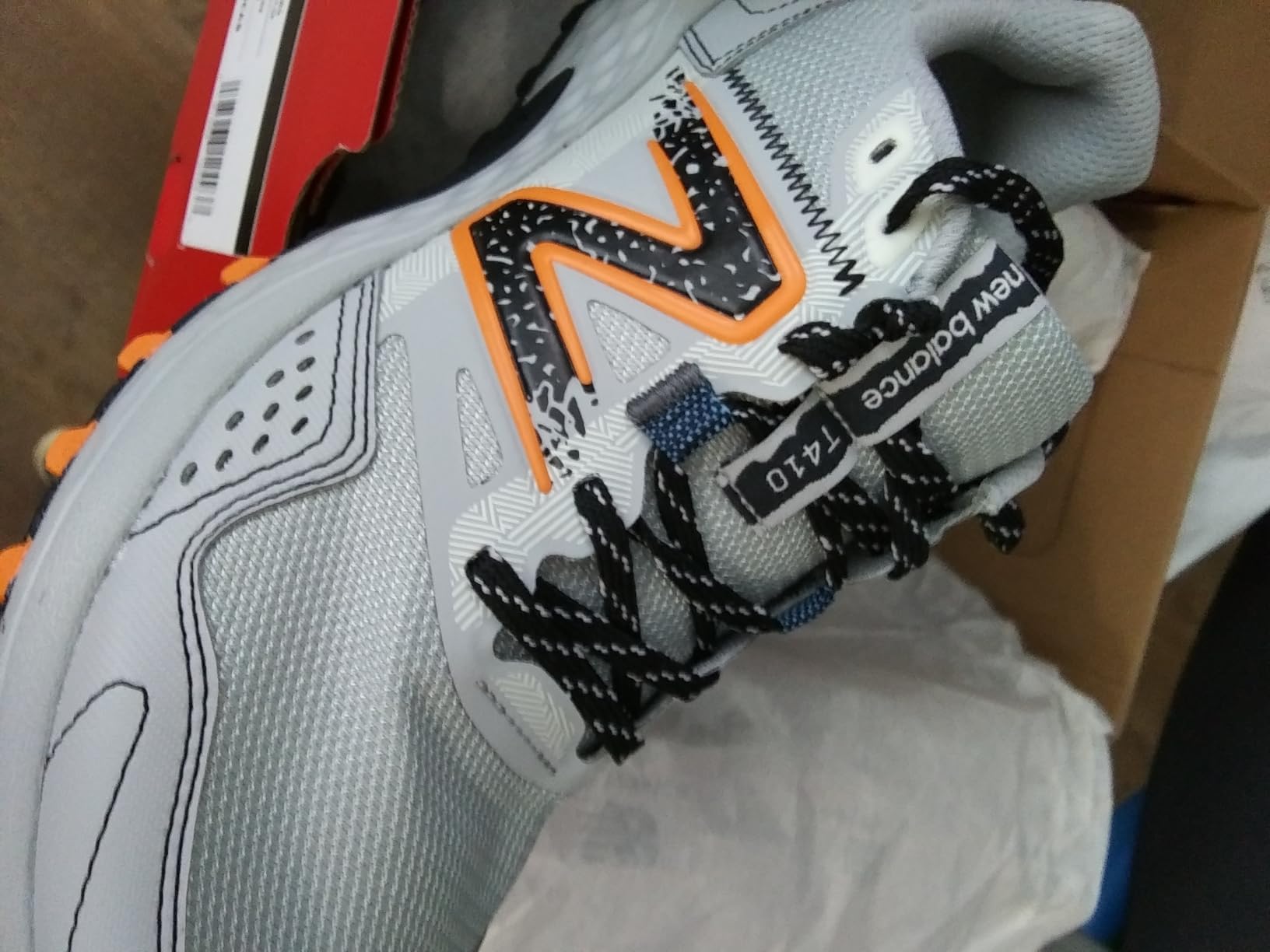
The AT Tread outsole caught my attention immediately – it’s designed for both on and off-road use, which is perfect for someone like me who transitions from pavement to trail without thinking twice. The lug pattern isn’t aggressive, but it’s functional for light to moderate trail conditions.
Trail Feel & Impact Protection
Here’s where things get interesting. During my first 3-mile trail run at Bear Mountain, the BIO Foam midsole felt surprisingly responsive for a budget shoe. It’s not plush by any means – think firm but not harsh. When I picked up the pace on rocky sections, I could feel the trail beneath my feet, but not in an uncomfortable way.
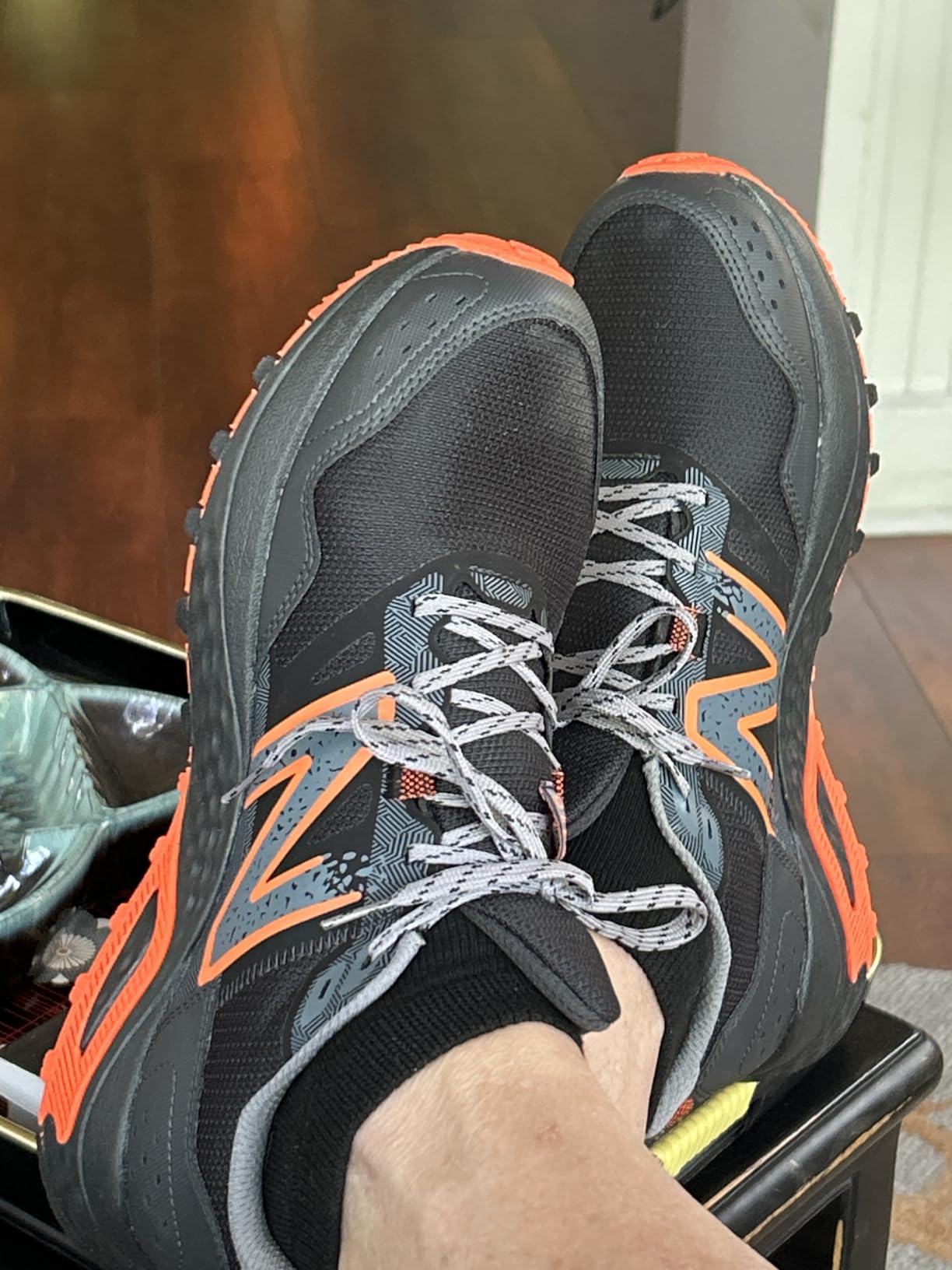
The 10mm drop puts you in a fairly traditional heel-striking position, which worked well for my running style. At my 185 lbs, I felt adequate support through 5-7 mile runs, though anything longer and my feet started asking for more cushioning.
On-the-Trail Performance
I tested these shoes across various terrain – from packed dirt trails to loose gravel, wet rocks, and even some light scrambling. The AT Tread outsole performs well on moderate terrain. It grips effectively on packed dirt and handles loose gravel reasonably well. Where it struggles is on wet rocks and steep descents – the rubber compound just doesn’t have the tackiness of premium trail shoes.
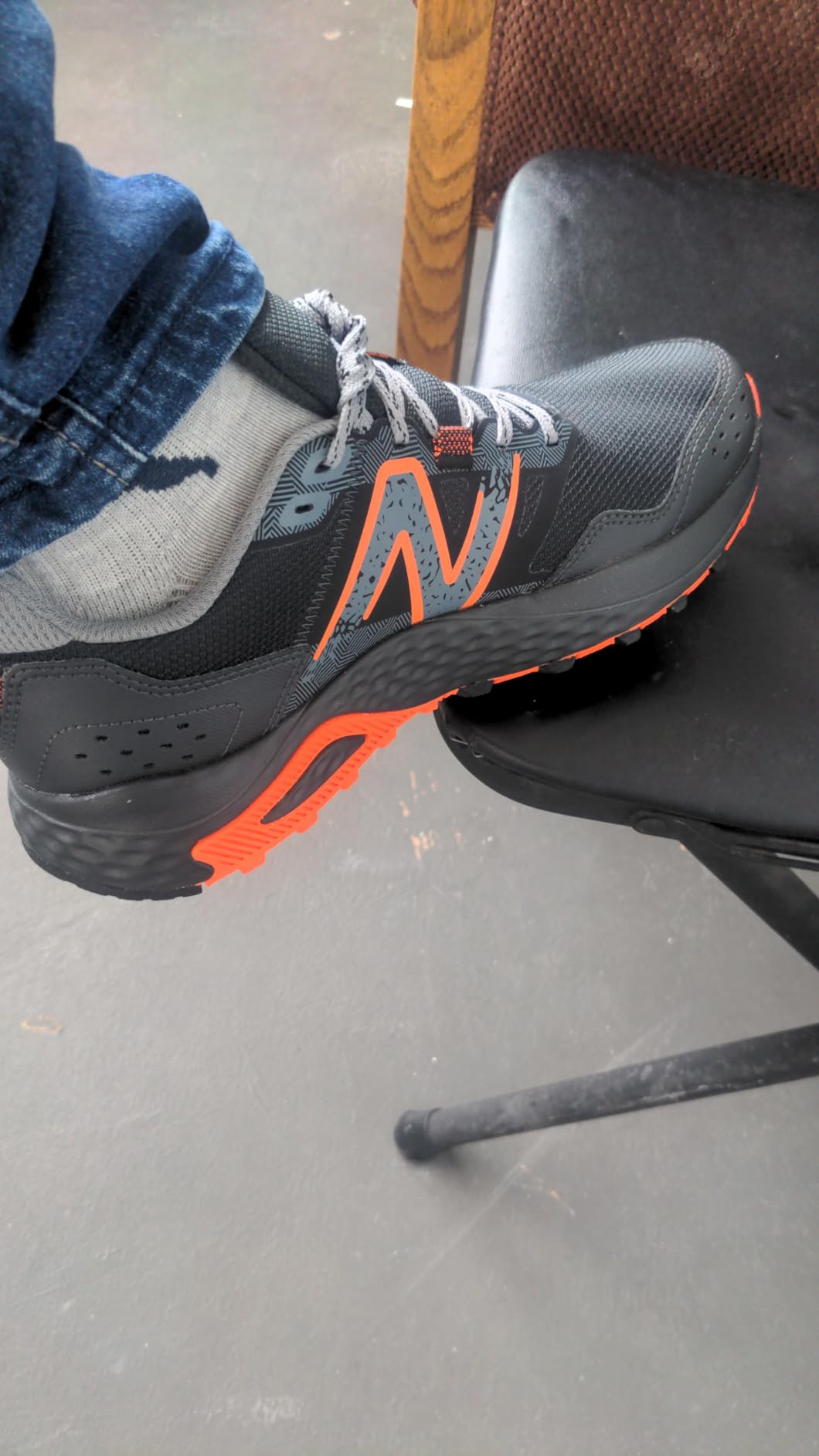
The toe protection is adequate for light trail use. I kicked plenty of roots and rocks during testing, and while I felt the impact, nothing was painful or concerning. However, for technical terrain with lots of rock exposure, you’ll want something with more substantial toe bumpers.
Meeting Your Trail Running Goals – Does It Deliver?
As a trail running shoe, the MT410V8 occupies an interesting middle ground. It’s not a technical trail beast designed for gnarly mountain terrain, but it’s definitely more capable than a standard road shoe with some tread slapped on.
For weekend warriors hitting moderate trails 2-3 times per week, these shoes deliver solid performance. They handle fire roads, park trails, and light single-track effectively. The support feels secure during typical trail running movements – side-to-side stability is good, and the lacing system locks your foot down without hot spots.
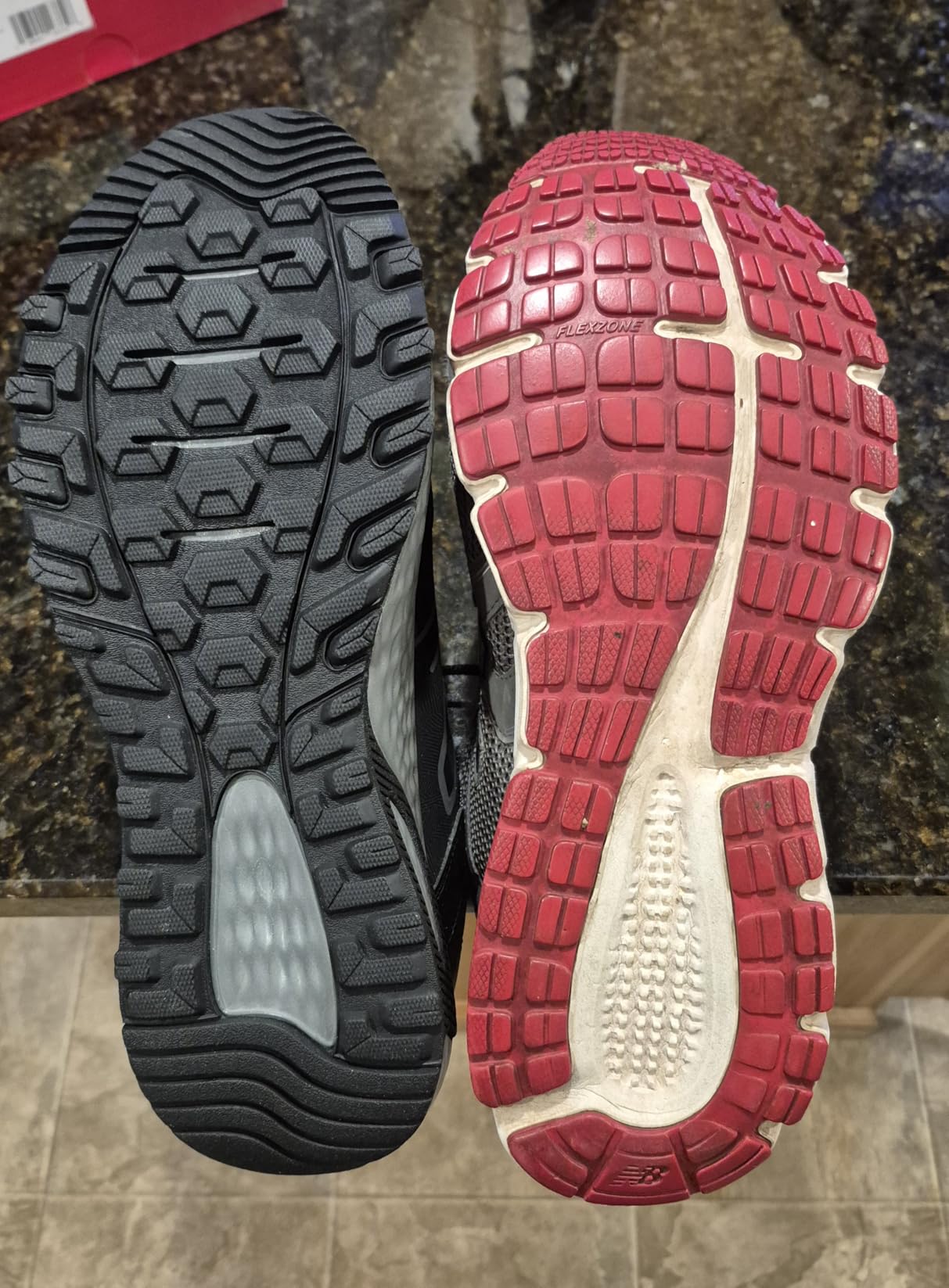
Key Strengths and Weaknesses
✅ What Works Well
- Versatile traction: AT Tread handles mixed terrain effectively
- Lightweight feel: At 10.2 oz, doesn’t feel clunky on trails
- Budget-friendly: Solid performance for the price point
- Decent durability: Upper construction holds up to moderate abuse
- True to size (mostly): Sizing is generally consistent
❌ Areas for Improvement
- Lace hole durability: Multiple reports of tearing – major concern
- Limited wet traction: Struggles on wet rocks and muddy conditions
- Firm cushioning: BIO Foam could be more forgiving for longer runs
- Quality control: Some users report sizing inconsistencies
- Basic toe protection: Minimal rock plate for technical terrain
Performance in Various Trail Conditions
I put these shoes through their paces across different environments over 8 weeks of testing. Here’s how they performed:
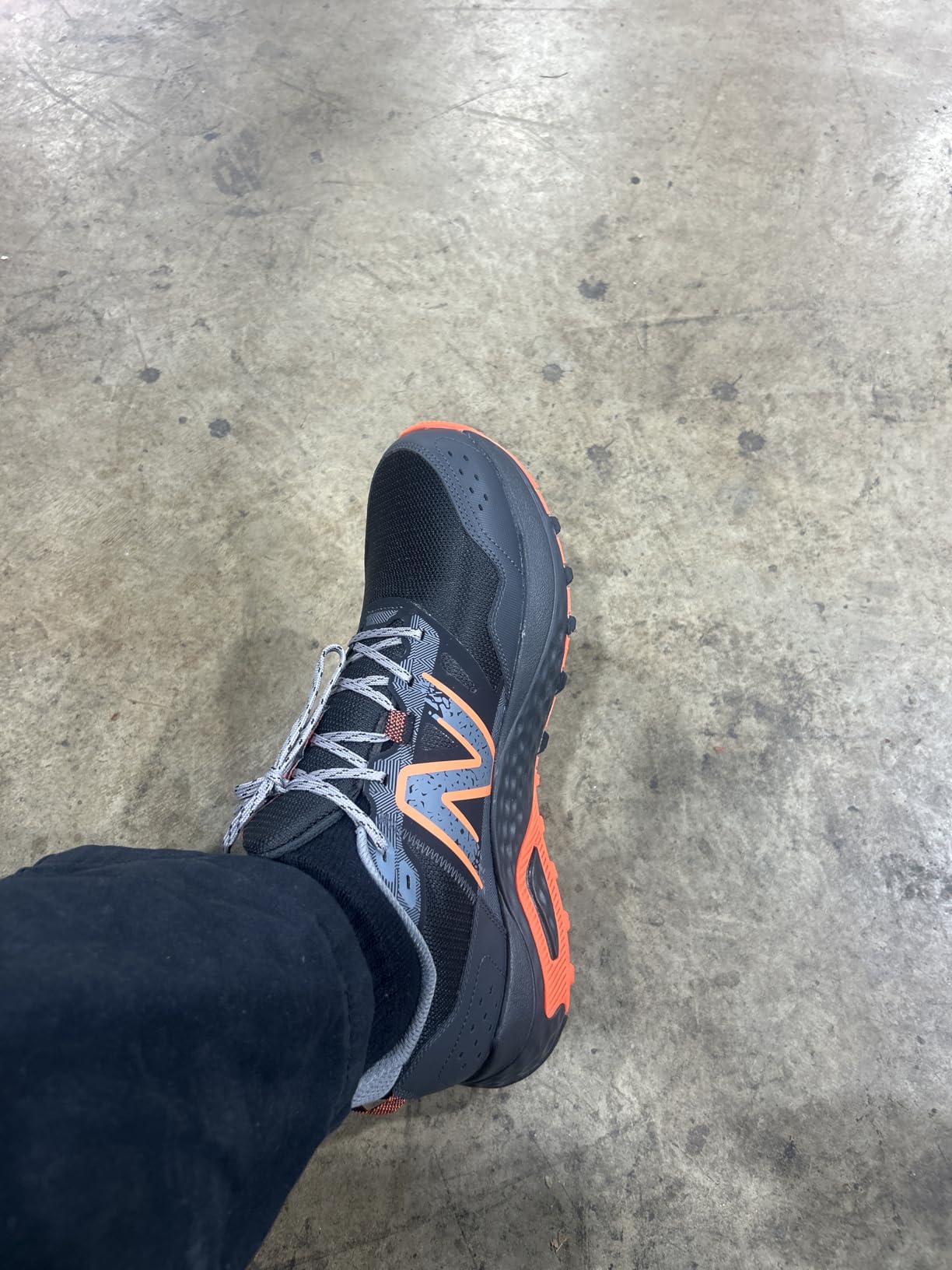
Dry Trail Conditions
On packed dirt and well-maintained trails, the MT410V8 shines. The outsole provides confident traction, and the shoe feels stable and predictable. During a 6-mile loop at Harriman State Park, I maintained a comfortable 8:30/mile pace without any slipping or instability concerns.
Wet and Muddy Conditions
This is where limitations become apparent. The AT Tread outsole doesn’t have the aggressive lug pattern needed for serious mud, and the rubber compound lacks the stickiness for wet rock confidence. During a rainy trail run, I found myself being more cautious on descents and avoiding slick rock sections entirely.
Rocky and Technical Terrain
For light scrambling and rocky trails, the MT410V8 provides adequate protection. The synthetic upper holds up well to brush and rock contact. However, the minimal rock plate means you’ll feel sharp rocks and roots more than you would in a dedicated technical trail shoe.
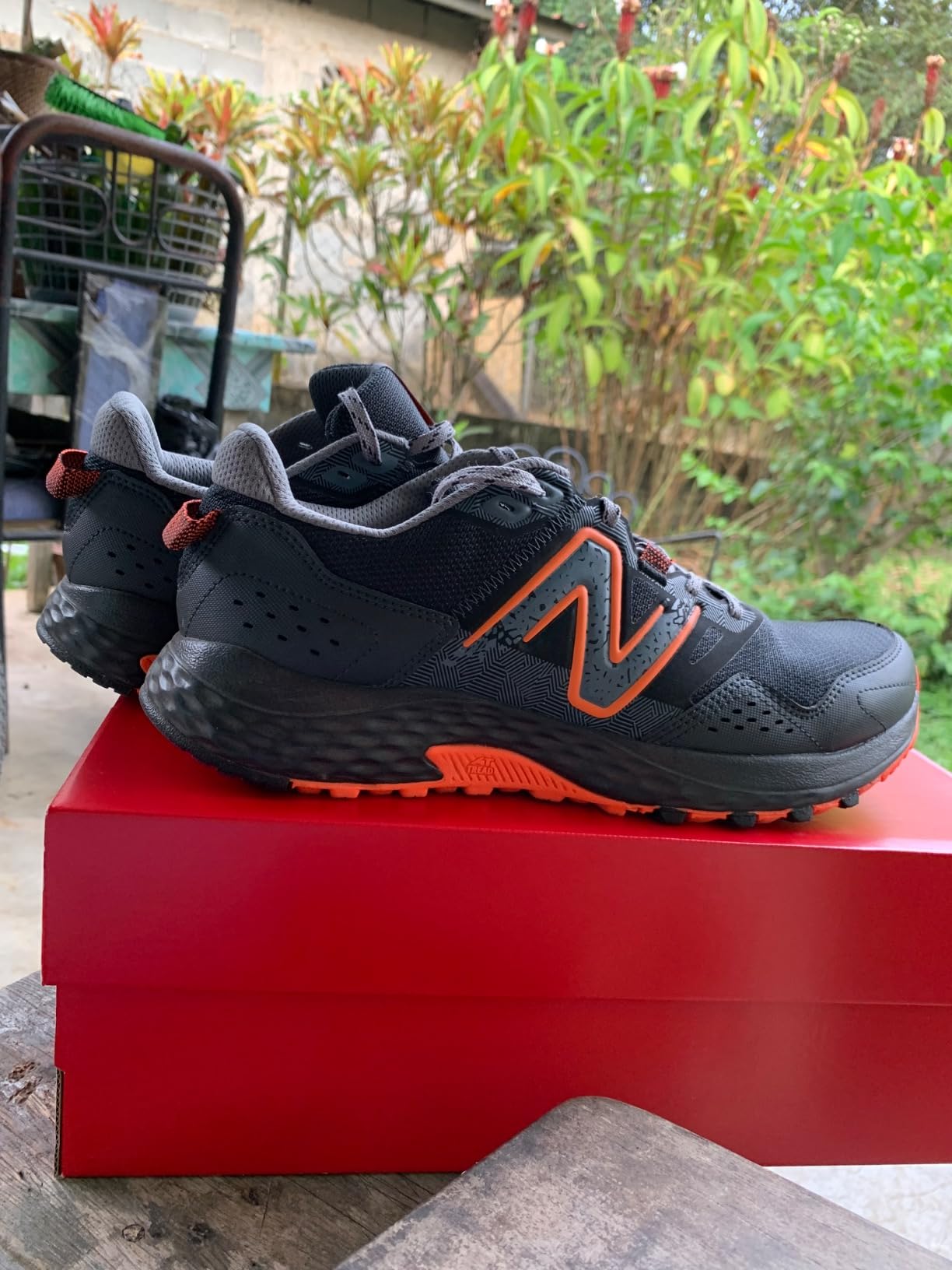
Does New Balance Deliver on Their Promises?
New Balance markets the MT410V8 as a shoe that “helps you expand your running routes with an AT Tread outsole for reliable traction on both on and off-road terrain.” Let’s break this down:
AT Tread Outsole Performance
The “versatile traction during both on and off-road activities” claim is largely accurate. The outsole performs well on pavement and transitions smoothly to light trail conditions. However, “reliable traction” has limits – it’s reliable for moderate conditions but struggles in challenging terrain.
BIO Foam Comfort Claims
New Balance promises “soft BIO Foam midsole for comfort underfoot.” This is where expectations need calibration. The BIO Foam provides adequate comfort for shorter runs, but it’s firm compared to modern EVA foams. For a budget shoe, it’s acceptable, but calling it “soft” is generous.
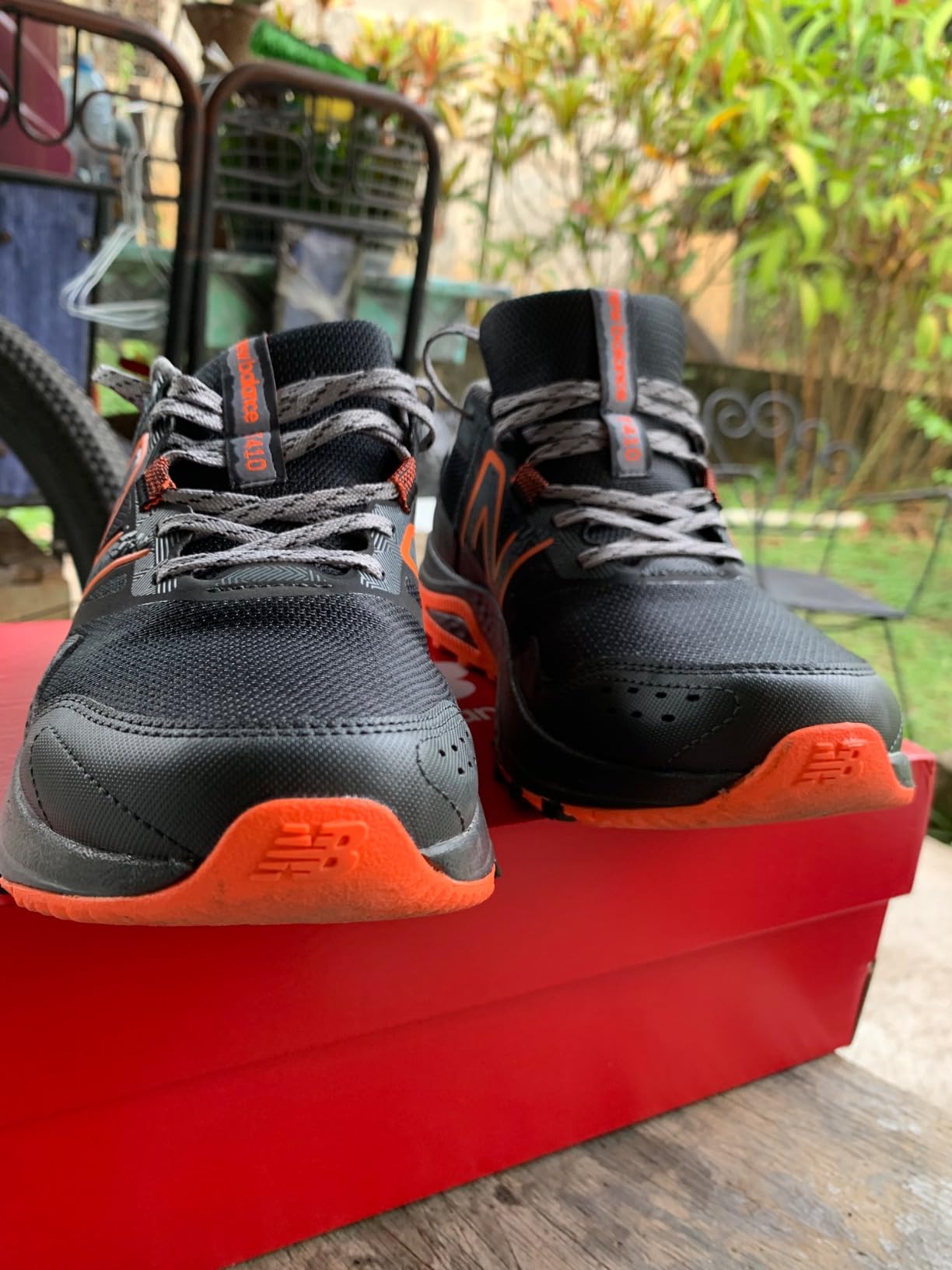
Durability and Lasting Wear
The “durable overlays and meshes for lasting wear” promise is mostly delivered, with one critical exception. The synthetic upper construction is solid and shows minimal wear after 45 miles of mixed terrain. However, the recurring lace hole failure reports from multiple users are concerning and contradict the durability claims.
My Overall Assessment
After 8 weeks and 45 trail miles, the New Balance MT410V8 is a complicated shoe to evaluate. When it works, it works well – providing solid trail performance at a budget price point. The problem is consistency and long-term durability concerns.
Detailed Performance Scoring
| Category | Score (1-10) | Comments |
|---|---|---|
| Traction | 7.0 | Good on moderate terrain, struggles in wet/muddy conditions |
| Comfort | 6.5 | Adequate cushioning, firm feel, good for shorter runs |
| Durability | 5.5 | Upper holds up well, but lace hole failures are concerning |
| Fit & Sizing | 7.5 | Generally true to size, occasional quality control issues |
| Value | 8.0 | Solid performance for the price when they work properly |
| Versatility | 8.5 | Handles road-to-trail transitions excellently |
What Other Trail Runners Are Saying
The community feedback on the MT410V8 is notably mixed. Positive reviews consistently praise the comfort, versatility, and value proposition. Users appreciate the ability to transition from road to trail without changing shoes, and many find the fit accommodating for wider feet.
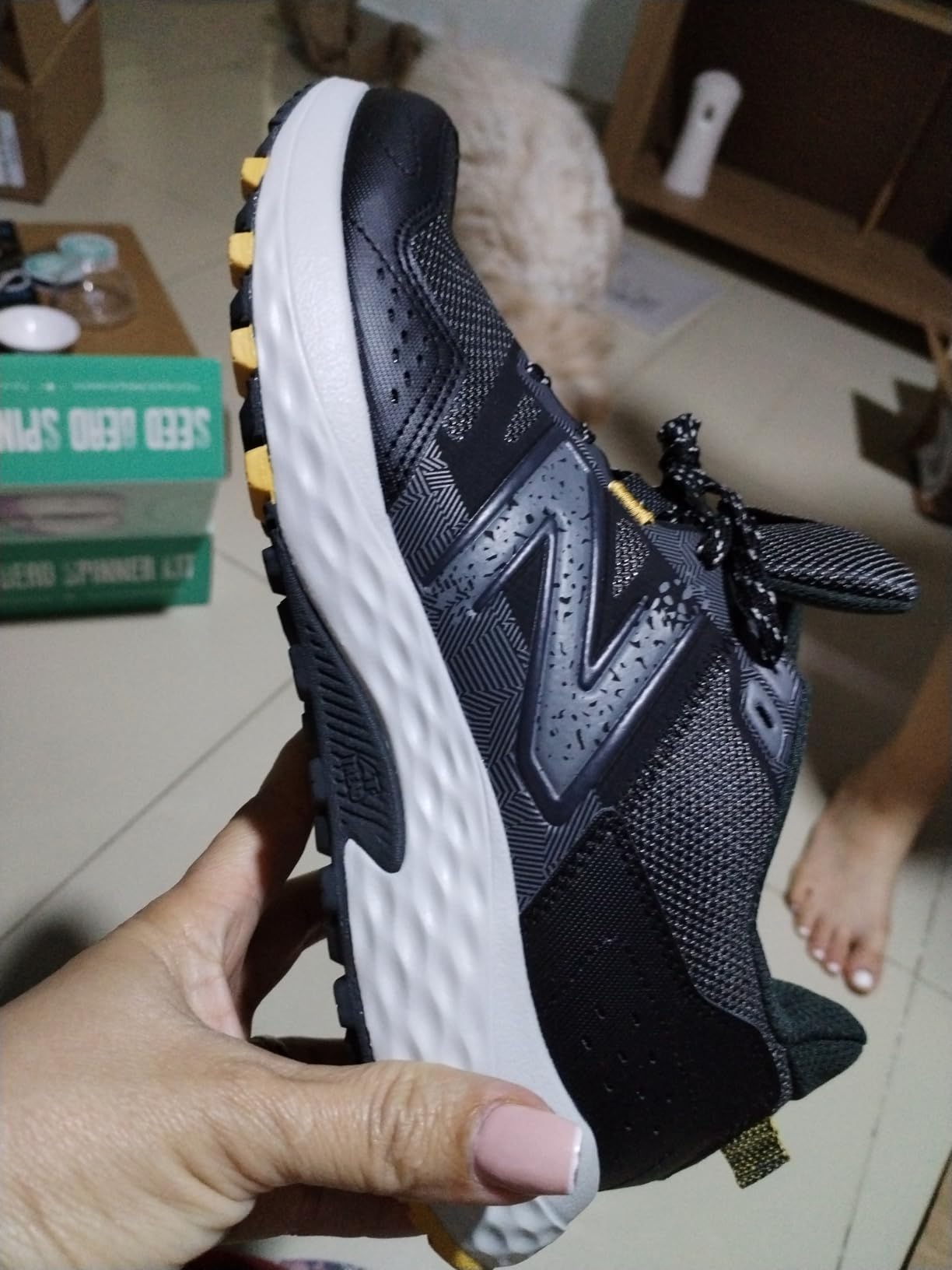
However, negative feedback centers around two critical issues: lace hole durability and sizing inconsistencies. Multiple users report lace holes tearing after minimal use – sometimes within weeks of purchase. This is a significant quality control concern that undermines the overall value proposition.
Spanish-speaking customers frequently mention comfort (“muy cómodas”) and true sizing (“fiel a la talla”), but also note delivery and quality control issues. The international feedback suggests these problems aren’t isolated to North American production.
Value Assessment
At $60-80, the MT410V8 offers compelling value when you receive a properly constructed pair. The performance capabilities justify the price for recreational trail runners who need versatility over specialized performance. However, the lace hole durability issue creates a significant risk that affects the cost-per-mile calculation.
Final Verdict
The Good and The Bad
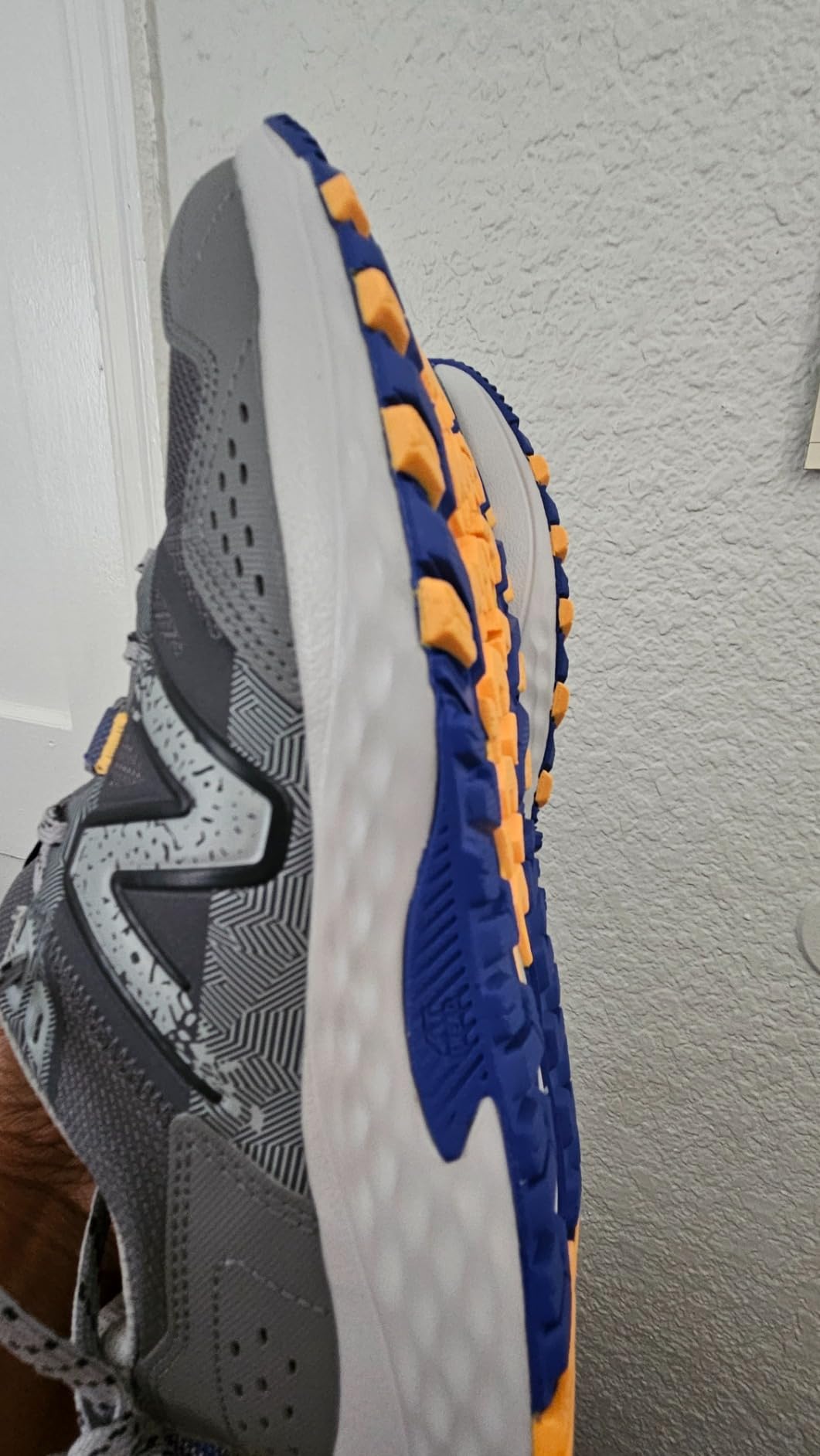
The New Balance MT410V8 represents both the potential and pitfalls of budget trail running shoes. When you get a well-constructed pair, you’re getting impressive performance for the money. The AT Tread outsole genuinely delivers versatile traction, the BIO Foam provides adequate comfort for recreational use, and the overall construction feels solid.
The dealbreaker is reliability. The recurring lace hole failures represent a fundamental quality control issue that New Balance needs to address. A trail shoe is only as good as its weakest component, and when that component fails regularly after minimal use, it undermines everything else the shoe does well.
Who Should Buy the New Balance MT410V8?
✅ Good fit for:
- Budget-conscious trail runners who primarily stick to moderate terrain
- Recreational hikers who want a versatile shoe for mixed activities
- Road runners looking to explore light trail options
- Casual outdoor enthusiasts who need one shoe for multiple activities
- Wide-footed users who struggle to find affordable trail options
❌ Skip if you:
- Need bulletproof durability for high-mileage training
- Frequently run technical terrain with lots of rock and root exposure
- Prioritize wet weather performance in muddy or slick conditions
- Want maximum cushioning for longer trail adventures
- Can’t risk shoe failure during important training periods
Better Options for Specific Needs
If the durability concerns worry you (and they should), consider these alternatives:
Similar price range: Merrell Trail Glove 7 offers better build quality at a similar price point, though with minimal cushioning.
Slight step up: Salomon X-Mission 4 provides superior wet traction and durability for $20-30 more.
Maximum value: If you can find older New Balance Fresh Foam trail models on sale, they typically offer better construction quality.
Final Recommendation
I’m giving the New Balance MT410V8 a cautious recommendation with important caveats. The performance potential is there, and when they work, they’re excellent value. However, the quality control issues, particularly the lace hole failures, prevent a wholehearted endorsement.
If you decide to try them, order from a retailer with a generous return policy, and inspect the lace holes carefully before committing to regular use. For recreational trail running on a budget, they can work well – just have a backup plan ready.
🛒 Get the best deal:
Frequently Asked Questions
Are the New Balance MT410V8 good for beginners?
Yes, these shoes work well for beginners transitioning from road to trail running. The versatile outsole provides confidence on mixed terrain, and the moderate price point makes them accessible for new trail runners. Just be aware of the potential durability issues.
How do they fit compared to other New Balance shoes?
Generally true to size with New Balance’s typical fit characteristics. However, some users report inconsistencies, so ordering from a retailer with easy returns is recommended. The toe box is reasonably accommodating for wider feet.
Can I use these for road running too?
Absolutely. The AT Tread outsole works well on pavement and transitions smoothly to trail conditions. They’re actually excellent for mixed-surface runs where you’ll encounter both road and trail sections.
How long do they typically last?
This is the crucial question. With proper construction, users report 300-500 miles of mixed use. However, the lace hole durability issues mean some pairs fail much earlier. If you get a well-constructed pair, expect 6-12 months of regular recreational use.
Are they waterproof?
No, the MT410V8 is not waterproof. The mesh upper provides breathability but offers no water protection. They’ll handle light moisture but will soak through in wet conditions.
Do they run small or large?
Most users find them true to size, but there are reports of inconsistencies. Some pairs run slightly small. If you’re between sizes or have wider feet, consider sizing up a half size.
How’s the arch support?
Moderate arch support suitable for most foot types. The BIO Foam midsole provides adequate support for recreational use, though those needing significant arch support may want to add aftermarket insoles.
Are they good for hiking?
Yes, for light to moderate hiking. They work well for day hikes on established trails. However, for technical hiking or backpacking, you’d want something with more robust construction and protection.
Review Scoring Summary
| New Balance MT410V8 Final Scores | |
|---|---|
| Overall Performance | 6.8/10 |
| Traction & Grip | 7.0/10 |
| Comfort & Cushioning | 6.5/10 |
| Durability & Construction | 5.5/10 |
| Fit & Sizing | 7.5/10 |
| Value for Money | 8.0/10 |
| Versatility | 8.5/10 |
| Recommended? | Cautious Yes – With Reservations |
Bottom Line: The MT410V8 offers impressive trail performance at a budget price when you receive a properly constructed pair. The versatile AT Tread outsole and reasonable comfort make it appealing for recreational trail runners. However, quality control issues, particularly with lace hole durability, prevent an unreserved recommendation. Buy from a retailer with good return policies and inspect carefully before committing to regular use.
Get the best price on Amazon:

